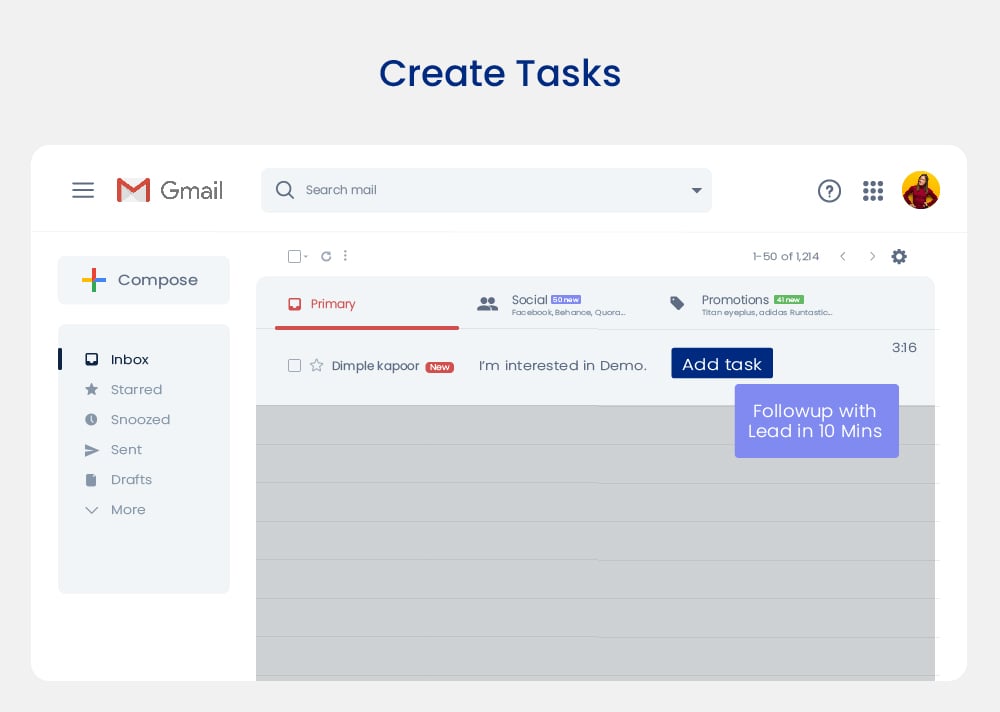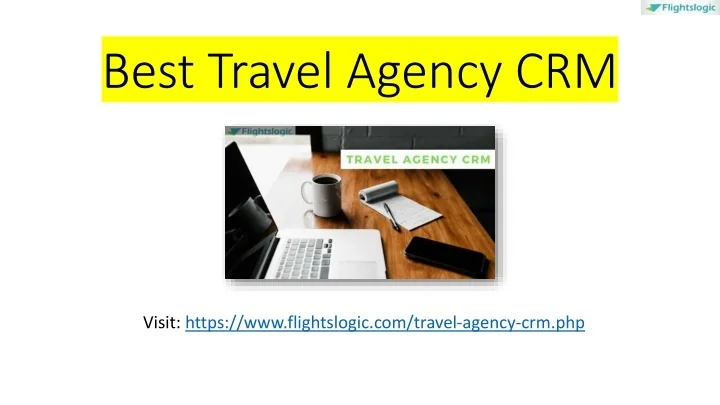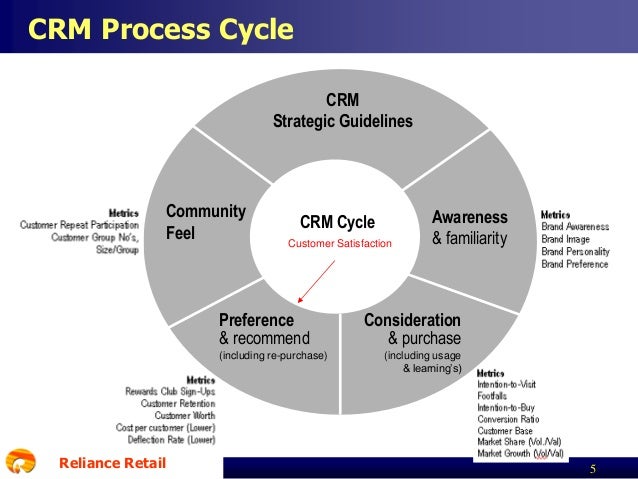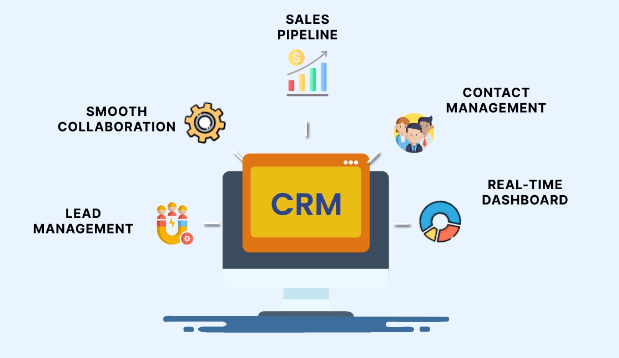Seamlessly Connect: A Comprehensive Guide to CRM Integration with Gmail

Seamlessly Connect: A Comprehensive Guide to CRM Integration with Gmail
In today’s fast-paced business world, efficiency and organization are paramount. Businesses constantly seek ways to streamline their workflows, improve customer relationships, and boost productivity. One powerful solution that addresses these needs is the integration of Customer Relationship Management (CRM) systems with Gmail. This guide delves into the intricacies of CRM integration with Gmail, providing a comprehensive understanding of its benefits, implementation strategies, and best practices. Whether you’re a small business owner or a seasoned professional, this article will equip you with the knowledge to leverage this potent combination for optimal results.
What is CRM Integration with Gmail?
At its core, CRM integration with Gmail involves connecting your CRM system with your Gmail account. This connection allows for seamless data exchange and synchronization between the two platforms. Essentially, it brings your customer data, sales information, and communication history directly into your Gmail interface. This means you can access crucial customer information, track interactions, and manage your sales pipeline without switching between multiple applications.
Imagine having all the information you need about a client readily available within your Gmail inbox. You can see their contact details, past conversations, purchase history, and any relevant notes – all at a glance. This level of accessibility empowers you to provide personalized service, respond to inquiries more effectively, and ultimately, build stronger customer relationships.
The Benefits of CRM Integration with Gmail
The advantages of integrating your CRM with Gmail are numerous and far-reaching. Here are some of the key benefits:
Enhanced Productivity
CRM integration eliminates the need to manually copy and paste information between Gmail and your CRM. This saves valuable time and reduces the risk of errors. Sales representatives and customer service agents can focus on their core responsibilities instead of wasting time on administrative tasks.
Improved Customer Relationship Management
With all customer information readily available in Gmail, you can provide more personalized and responsive service. You can easily access a customer’s history, understand their needs, and tailor your communications accordingly. This fosters stronger relationships and increases customer loyalty.
Streamlined Communication
CRM integration allows you to track all email interactions with customers within your CRM system. This provides a complete view of your communication history, making it easier to follow up on leads, manage support tickets, and resolve issues efficiently.
Better Sales Performance
By providing sales teams with instant access to customer information, CRM integration can significantly improve sales performance. Sales reps can quickly identify leads, track their progress through the sales pipeline, and close deals more effectively. The ability to view a client’s history, current status, and relevant notes directly within Gmail empowers sales professionals to close more deals and increase revenue.
Data Accuracy and Consistency
CRM integration ensures that customer data is synchronized across both Gmail and your CRM system. This eliminates the risk of data discrepancies and ensures that everyone in your organization has access to the most up-to-date information. This consistency is crucial for making informed decisions and providing consistent customer experiences.
Centralized Information Hub
With the integration, Gmail transforms into a centralized hub for all customer-related information. This eliminates the need to search through multiple applications to find the information you need. Everything is accessible within your Gmail interface, saving you time and effort.
Reduced Manual Data Entry
Automated data synchronization minimizes the need for manual data entry, reducing the risk of human error and freeing up valuable time for more important tasks. This automation ensures that information is always up-to-date and readily available.
Improved Collaboration
CRM integration facilitates better collaboration among team members. Sales reps, customer service agents, and other team members can easily share customer information and communicate effectively, leading to improved teamwork and better customer outcomes.
Choosing the Right CRM for Gmail Integration
Selecting the right CRM system is crucial for successful Gmail integration. Several factors should be considered when making your decision:
Features and Functionality
Look for a CRM that offers the features and functionality you need to manage your customer relationships effectively. Consider factors such as contact management, sales pipeline management, lead tracking, reporting and analytics, and marketing automation. Ensure that the CRM meets your specific business requirements.
Gmail Integration Capabilities
Ensure that the CRM offers seamless integration with Gmail. Look for features such as email tracking, contact synchronization, and the ability to view CRM data directly within Gmail. Check for native integrations or reliable third-party add-ons.
Ease of Use
Choose a CRM that is easy to use and navigate. The system should be intuitive and user-friendly, allowing your team to quickly adopt and utilize its features. Consider the learning curve and the availability of training resources.
Scalability
Select a CRM that can scale with your business. As your business grows, your CRM should be able to accommodate your increasing needs. Consider the system’s capacity, data storage limitations, and the ability to handle a growing number of users.
Pricing
Consider the pricing structure of the CRM. Compare the costs of different CRM systems and choose one that fits your budget. Evaluate the features included in each plan and ensure that you are getting the best value for your money.
Reviews and Ratings
Read reviews and ratings from other users to get an idea of the CRM’s strengths and weaknesses. Consider the experiences of other businesses in your industry and make an informed decision.
Popular CRM Systems with Gmail Integration
Several CRM systems offer excellent integration with Gmail. Here are some of the most popular options:
Salesforce
Salesforce is a leading CRM platform known for its comprehensive features and robust integration capabilities. It offers a powerful Gmail integration that allows you to track emails, manage contacts, and access CRM data directly within Gmail. It is a robust, enterprise-grade solution, ideal for businesses of all sizes, but requires a significant investment in time and resources to implement and maintain.
Zoho CRM
Zoho CRM is a versatile CRM system that offers a user-friendly interface and a wide range of features. It provides seamless integration with Gmail, allowing you to manage your contacts, track emails, and automate your sales processes. It is known for its affordability and ease of use, making it a great option for small and medium-sized businesses.
HubSpot CRM
HubSpot CRM is a free, all-in-one CRM platform that offers a range of features, including contact management, sales pipeline management, and email tracking. It integrates seamlessly with Gmail, allowing you to manage your sales and marketing activities directly within your inbox. HubSpot is an excellent choice for businesses looking for a free and easy-to-use CRM solution.
Pipedrive
Pipedrive is a sales-focused CRM that is designed to help sales teams manage their deals and close more sales. It offers a clean and intuitive interface and a powerful Gmail integration that allows you to track emails, manage contacts, and automate your sales processes. Pipedrive is known for its focus on sales productivity and its user-friendly design.
Copper
Copper is a CRM specifically designed for businesses that use Google Workspace. It offers seamless integration with Gmail, Google Calendar, and other Google apps. Copper is known for its ease of use and its focus on collaboration, making it a great option for businesses that rely on Google Workspace for their daily operations.
Implementing CRM Integration with Gmail: A Step-by-Step Guide
Implementing CRM integration with Gmail typically involves the following steps:
Choose a CRM System
Select the CRM system that best meets your business needs. Consider the factors mentioned above, such as features, integration capabilities, ease of use, and pricing.
Sign Up for a CRM Account
Create an account with your chosen CRM provider. Follow the registration process and provide the necessary information.
Install the Gmail Integration
Install the Gmail integration for your chosen CRM system. This may involve installing a browser extension, add-on, or app from the Google Workspace Marketplace. Follow the instructions provided by your CRM provider.
Connect Your Gmail Account
Connect your Gmail account to your CRM system. This typically involves authorizing the CRM to access your Gmail data. Follow the prompts and grant the necessary permissions.
Configure the Integration
Configure the integration settings to customize how data is synchronized between Gmail and your CRM. This may include specifying which data fields to sync, setting up email tracking, and configuring automation rules.
Test the Integration
Test the integration to ensure that it is working correctly. Send test emails, create test contacts, and verify that data is being synchronized accurately.
Train Your Team
Train your team on how to use the CRM integration. Provide them with the necessary training and resources to effectively utilize the features and functionality of the integrated system.
Monitor and Optimize
Monitor the performance of the CRM integration and make adjustments as needed. Review the data synchronization, track email activity, and optimize the integration to improve your efficiency.
Best Practices for CRM Integration with Gmail
To maximize the benefits of CRM integration with Gmail, consider the following best practices:
Define Clear Goals
Before implementing CRM integration, define your goals and objectives. What do you want to achieve with the integration? What specific challenges are you trying to solve? Having clear goals will help you choose the right CRM, configure the integration effectively, and measure your success.
Clean Your Data
Ensure that your CRM data is clean and accurate. Remove duplicate contacts, correct any errors, and standardize your data formatting. Clean data is essential for accurate reporting and effective customer relationship management.
Customize the Integration
Customize the integration settings to meet your specific business needs. Configure the data synchronization, email tracking, and automation rules to optimize your workflow and improve your productivity.
Train Your Team Properly
Provide your team with comprehensive training on how to use the CRM integration. Ensure that they understand the features and functionality of the integrated system and how to use it effectively. Well-trained users are more likely to adopt the system and achieve the desired results.
Encourage Adoption
Encourage your team to adopt the CRM integration by highlighting its benefits and providing ongoing support. Address any questions or concerns they may have and provide regular feedback. Positive reinforcement and encouragement can help ensure that your team embraces the new system.
Regularly Review and Optimize
Regularly review the performance of the CRM integration and make adjustments as needed. Monitor the data synchronization, track email activity, and identify areas for improvement. Optimize the integration to ensure that it is meeting your business needs and maximizing your efficiency.
Prioritize Data Security
Implement robust security measures to protect your customer data. Use strong passwords, enable two-factor authentication, and regularly review your security settings. Ensure that your CRM provider has adequate security protocols in place.
Stay Updated
Keep your CRM system and Gmail integration up to date. Regularly update your software to ensure that you are using the latest features and security patches. Stay informed about new features and updates from your CRM provider and Gmail.
Troubleshooting Common Issues
While CRM integration with Gmail is generally straightforward, you may encounter some issues. Here are some common problems and how to address them:
Data Synchronization Issues
If data is not synchronizing correctly between Gmail and your CRM, check the integration settings to ensure that the data fields are mapped correctly. Verify that your CRM has the necessary permissions to access your Gmail data. Sometimes, a simple restart of the integration can resolve synchronization problems. If the problem persists, contact your CRM provider for assistance.
Email Tracking Problems
If you are having trouble tracking emails, ensure that email tracking is enabled in the integration settings. Check your email settings to make sure that your emails are being sent correctly. Some email providers may block tracking pixels, so you may need to adjust your settings accordingly. If the problem persists, contact your CRM provider for assistance.
Contact Synchronization Problems
If contacts are not synchronizing correctly, check the contact sync settings to ensure that the correct contact fields are being synchronized. Verify that your CRM has the necessary permissions to access your Gmail contacts. Some CRM systems may have limitations on the number of contacts that can be synchronized. If the problem persists, contact your CRM provider for assistance.
Integration Errors
If you encounter any integration errors, check the error messages for clues about the problem. Review the documentation for your CRM and Gmail integration to identify possible solutions. Contact your CRM provider for assistance if the problem is not resolved. In many cases, a simple restart of the integration or a re-authentication of your accounts will resolve the issue.
The Future of CRM and Gmail Integration
The integration of CRM systems with Gmail is constantly evolving, with new features and capabilities being added regularly. Here are some trends to watch:
Artificial Intelligence (AI)
AI is playing an increasingly important role in CRM and Gmail integration. AI-powered features can automate tasks, provide insights, and personalize customer interactions. Expect to see more AI-driven features in the future, such as automated email responses, predictive analytics, and intelligent lead scoring.
Enhanced Mobile Integration
Mobile devices are becoming increasingly important for business users. Future integrations will focus on providing seamless mobile access to CRM data and functionality. Expect to see more robust mobile apps and improved mobile-optimized features.
Deeper Integrations
Expect to see deeper integrations between CRM systems and other Google Workspace apps, such as Google Calendar, Google Drive, and Google Meet. These integrations will provide a more comprehensive and seamless experience for users.
Increased Personalization
Personalization will become even more important in the future. Expect to see more features that allow businesses to personalize their customer interactions, such as personalized email templates, targeted content, and customized dashboards.
Focus on User Experience
User experience will continue to be a key focus for CRM and Gmail integration. Expect to see more user-friendly interfaces, intuitive features, and streamlined workflows. The goal will be to make the integration as seamless and easy to use as possible.
Conclusion
CRM integration with Gmail offers a powerful solution for businesses seeking to improve their customer relationships, streamline their workflows, and boost their productivity. By choosing the right CRM, implementing the integration effectively, and following best practices, you can unlock the full potential of this potent combination. From enhanced productivity and streamlined communication to better sales performance and data accuracy, the benefits are clear. Embrace the power of CRM integration with Gmail and take your business to the next level. As technology continues to evolve, staying informed about the latest trends and best practices will ensure that you remain at the forefront of customer relationship management. Implementing the strategies and insights in this guide will empower you to transform your Gmail inbox into a dynamic hub for customer engagement and business success. The journey toward more efficient and effective customer relationships starts now!




